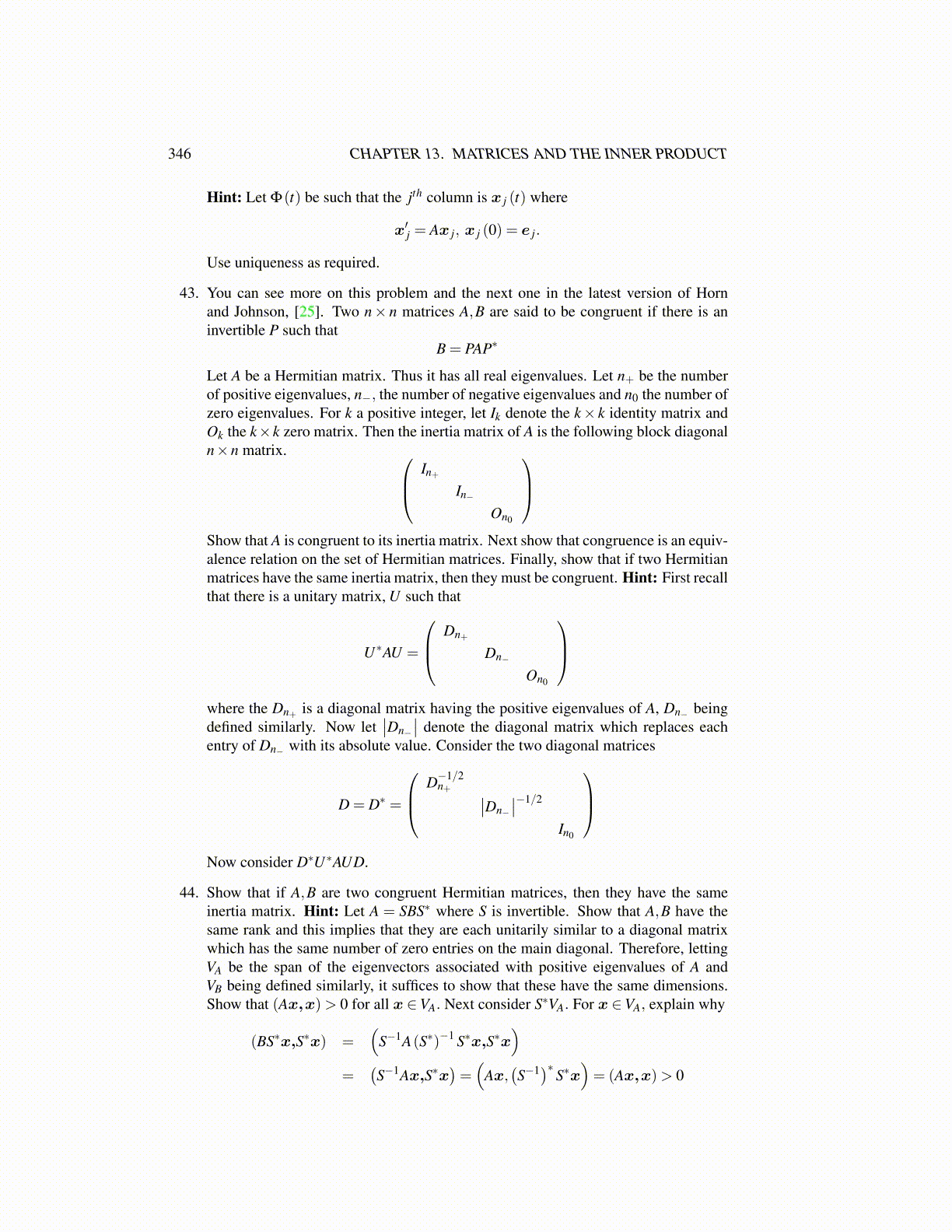
346 CHAPTER 13. MATRICES AND THE INNER PRODUCT
Hint: Let Φ(t) be such that the jth column is x j (t) where
x′j = Ax j, x j (0) = e j.
Use uniqueness as required.
43. You can see more on this problem and the next one in the latest version of Hornand Johnson, [25]. Two n× n matrices A,B are said to be congruent if there is aninvertible P such that
B = PAP∗
Let A be a Hermitian matrix. Thus it has all real eigenvalues. Let n+ be the numberof positive eigenvalues, n−, the number of negative eigenvalues and n0 the number ofzero eigenvalues. For k a positive integer, let Ik denote the k× k identity matrix andOk the k×k zero matrix. Then the inertia matrix of A is the following block diagonaln×n matrix. In+
In−
On0
Show that A is congruent to its inertia matrix. Next show that congruence is an equiv-alence relation on the set of Hermitian matrices. Finally, show that if two Hermitianmatrices have the same inertia matrix, then they must be congruent. Hint: First recallthat there is a unitary matrix, U such that
U∗AU =
Dn+
Dn−
On0
where the Dn+ is a diagonal matrix having the positive eigenvalues of A, Dn− beingdefined similarly. Now let
∣∣Dn−
∣∣ denote the diagonal matrix which replaces eachentry of Dn− with its absolute value. Consider the two diagonal matrices
D = D∗ =
D−1/2n+ ∣∣Dn−
∣∣−1/2
In0
Now consider D∗U∗AUD.
44. Show that if A,B are two congruent Hermitian matrices, then they have the sameinertia matrix. Hint: Let A = SBS∗ where S is invertible. Show that A,B have thesame rank and this implies that they are each unitarily similar to a diagonal matrixwhich has the same number of zero entries on the main diagonal. Therefore, lettingVA be the span of the eigenvectors associated with positive eigenvalues of A andVB being defined similarly, it suffices to show that these have the same dimensions.Show that (Ax,x)> 0 for all x ∈VA. Next consider S∗VA. For x ∈VA, explain why
(BS∗x,S∗x) =(
S−1A(S∗)−1 S∗x,S∗x)
=(S−1Ax,S∗x
)=(
Ax,(S−1)∗ S∗x
)= (Ax,x)> 0